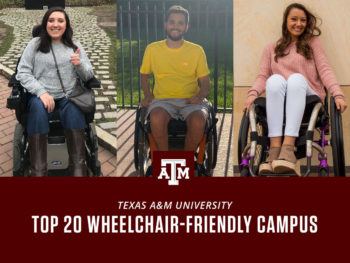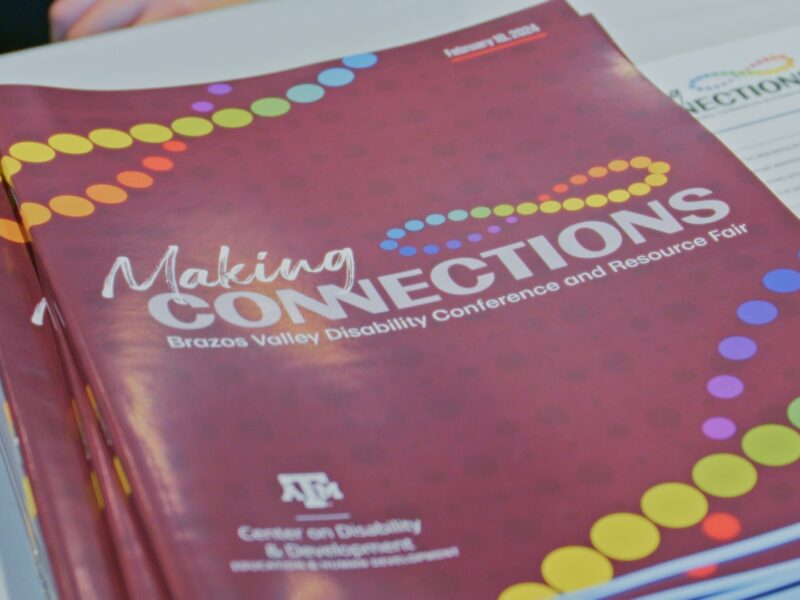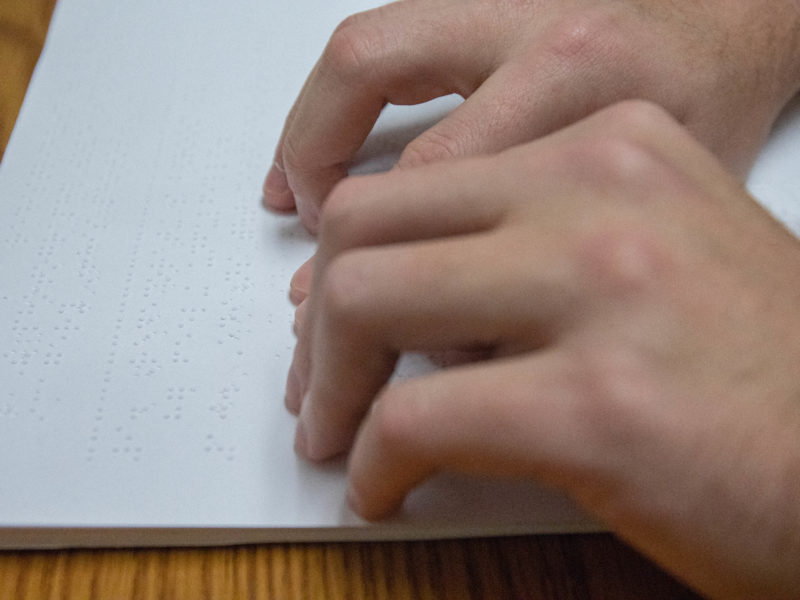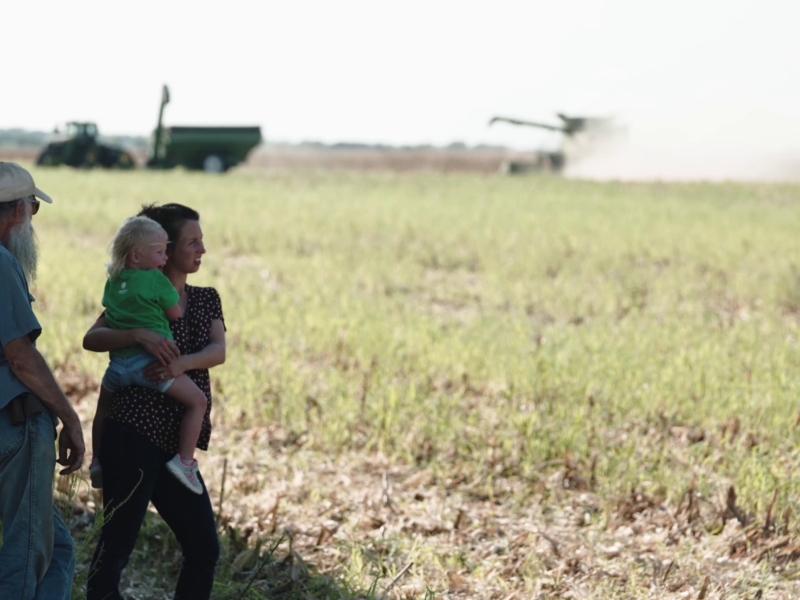Texas A&M University Named Top 20 Wheelchair-Friendly Campus

Texas A&M University has been named one of the top 20 wheelchair-friendly campuses in the nation by New Mobility magazine and the United Spinal Association. New Mobility published the rankings in its special issue “Wheels on Campus: A Guide to Wheelchair-friendly Higher Education.”
Texas A&M lands at No. 13 on the list, between the University of Minnesota and the University of Nevada.
The publication surveyed hundreds of colleges and interviewed more than 80 wheelchair-using students and disability service leaders to identify 20 colleges that create wheelchair-friendly campuses and cultures. Students attending one of the schools listed in the top 20 describe access, accommodations, housing, extracurricular activities, study abroad opportunities, and related topics.
“We are excited that Texas A&M is included in the guide,” said Kristie Orr, director of Texas A&M Disability Resources. “Texas A&M has made huge strides in recognizing that accessibility is the responsibility of everyone on campus. Reading what the Texas A&M students said about their campus experiences was incredibly rewarding.”
Katherine Vacek, a junior at Texas A&M studying history, shared her experience as a student with a T6 spinal cord injury who uses a wheelchair. Vacek said many of her therapists recommended Texas A&M, which helped her make the decision to enroll. She spoke highly of her experience pledging Delta Zeta and the support that Disability Resources provided.
“At Texas A&M, all sorority houses are required to be wheelchair accessible,” Vacek said. “Each one has at least one accessible entrance, accessible parking, and accessible bathrooms on the first floor. Part of the reason I wanted to pledge Delta Zeta was the fact that I found its house to be more accessible and better for me than other houses. However, it does not have an accessible living situation so I am not able to live in the house. Disability Resources called ahead and communicated with the Panhellenic head of recruitment to ensure that everything would be accessible and running smoothly throughout rush week.”
New Mobility also featured experiences from Taylor Sutton, a junior majoring in agricultural leadership development, serves in the Corps of Cadets, and has spinal muscular atrophy; Kaki Kaki, a quadriplegic and senior in aerospace engineering; and Brianna Bazan, a junior majoring in biomedical sciences with a double minor in public health and entomology, and who has a T4 spinal cord injury.
Disability Resources helps ensure students like Vacek have wheelchair access to all their classes. As a history major, a few of Vacek’s classes were originally scheduled to be in the Military Sciences Building, which is one of the last wheelchair inaccessible areas on campus. Disability Resources facilitated a reassignment for those courses to an accessible building so Vacek could attend.
During her time at Texas A&M, Vacek has seen great strides toward accessibility and hopes Texas A&M continues to improve. She credits Disability Resources and the friendly Aggie Network for always making her feel at home.
“I’m so proud of my university for being featured in Wheels on Campus,” she said. “I know many people at Texas A&M work hard to make an accessible and welcoming place for everybody. We deserve it. We have made a lot of strides in making this campus more accessible.”
New buildings like the Student Services Building and the Innovative Learning Classroom Building intentionally include accessibility in the design, not just to meet codes, but to be welcoming and inclusive of disabled students, faculty, staff and visitors, Orr said.
Last year, Disability Resources changed its name to reflect the new focus of the department. This was one of many steps Orr and her team of 17 staff members and 15 student workers have taken to create an inclusive campus environment for students with disabilities.
Disability Resources continues to promote accessibility across campus, including facilitating training, outreach and presentations for the campus community. Orr said the team focuses on promoting universal design and how accessibility can improve the campus experience for everyone.
“The work for inclusive accessibility is never done. Our team continues to collaborate with others across campus to remove barriers. There is still much work to be done to rank No. 1,” Orr said.
While Vacek hasn’t spent much time on campus this semester due to COVID-19, she hopes visibility and awareness will continue to increase.
“Many students I had classes with had no idea that the Disability Resources team is available to assist them,” she said. “We need to lessen the stigma around utilizing these resources. It’s OK to use them. These professionals are there to help you improve your academic success.”
To learn more about New Mobility and read the full Wheels on Campus guide, visit the publication’s website. For more about accessibility resources at Texas A&M, visit the Disability Resources website or contact them at disability@tamu.edu. Follow its Twitter account to get involved in the conversation.
Media contact: Sondra White, 979-458-3296, sondra@tamu.edu





